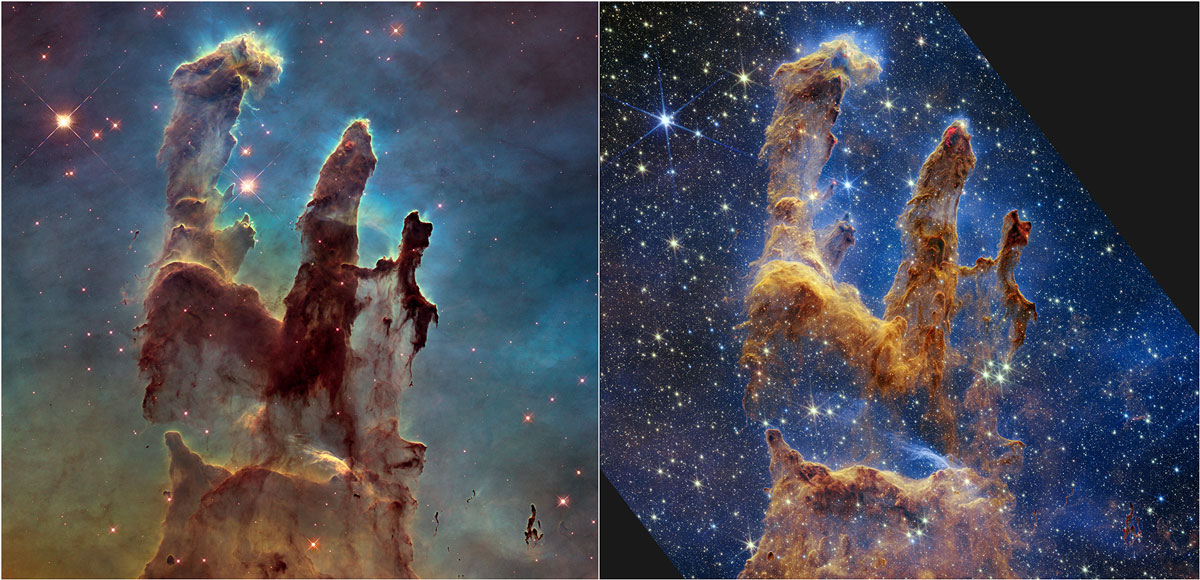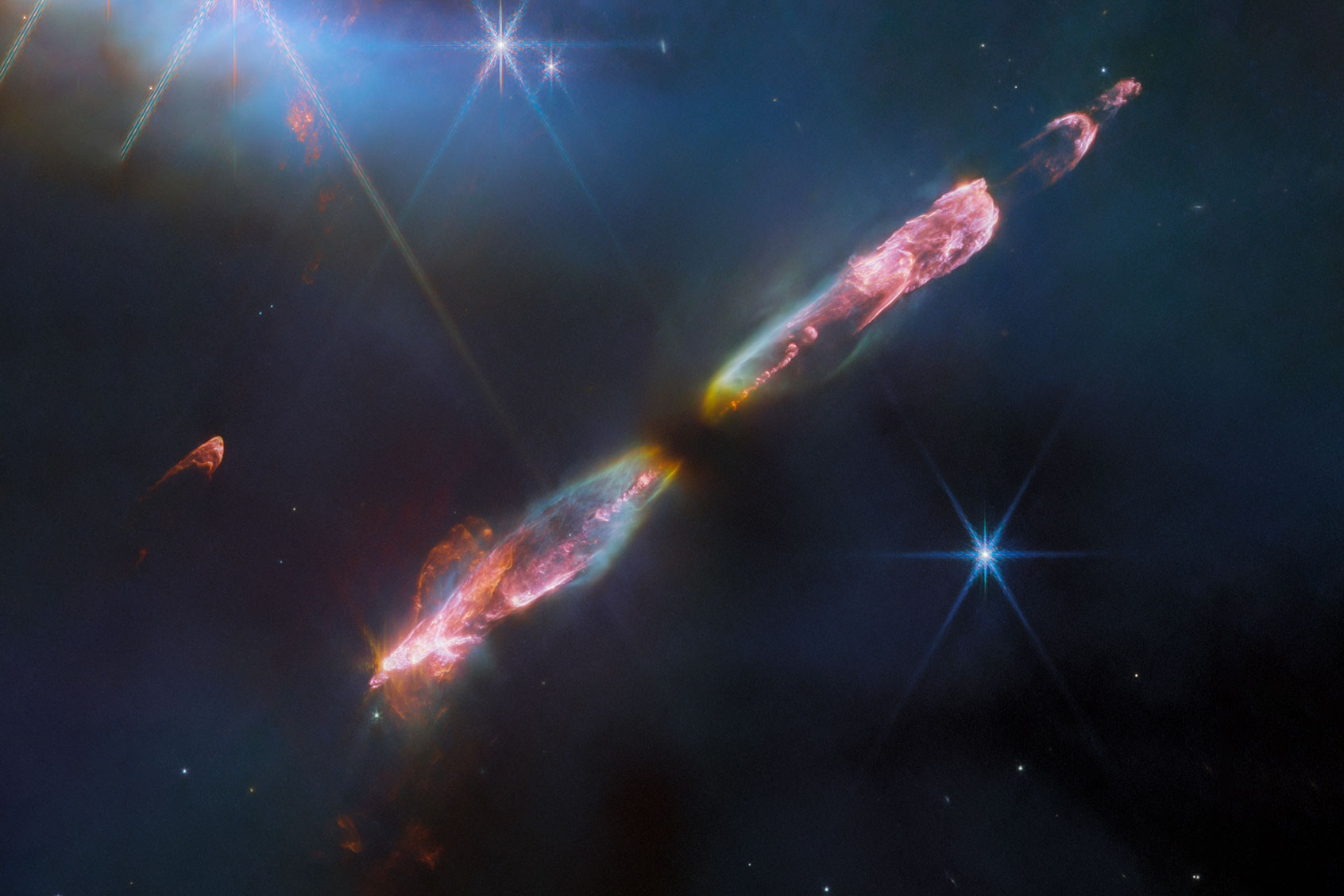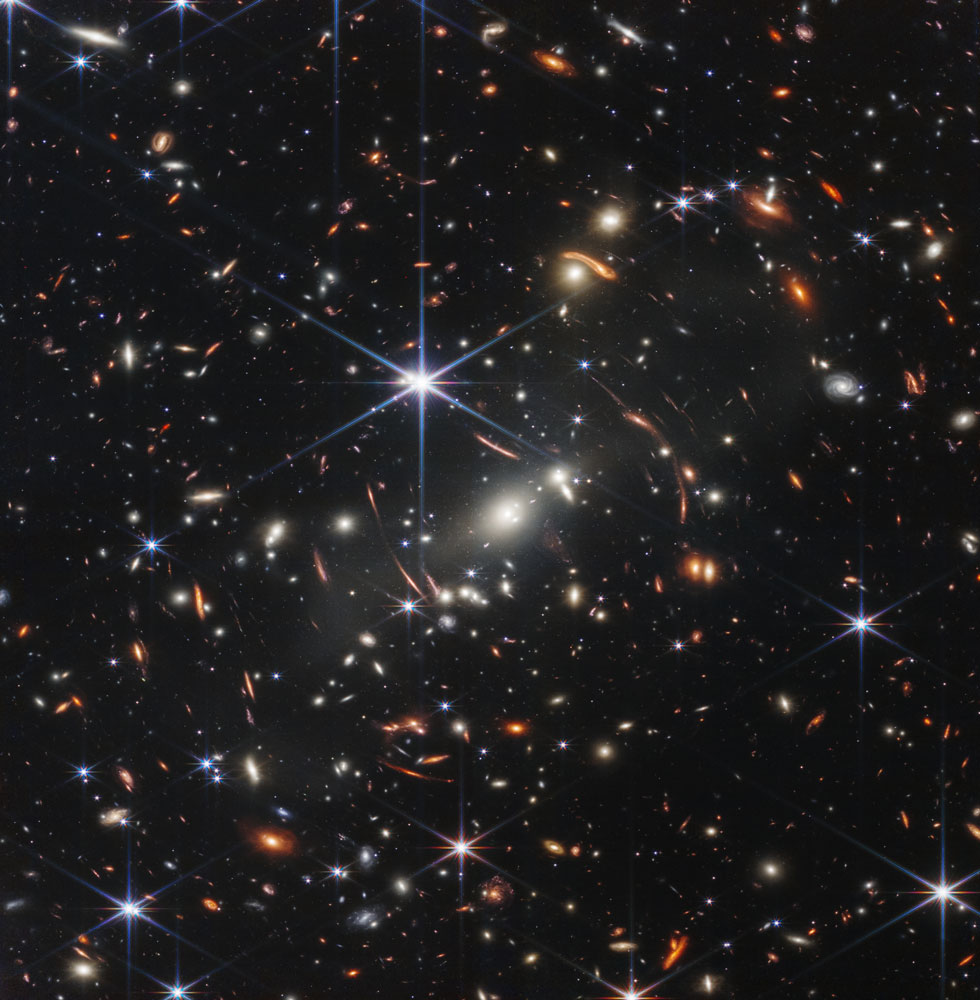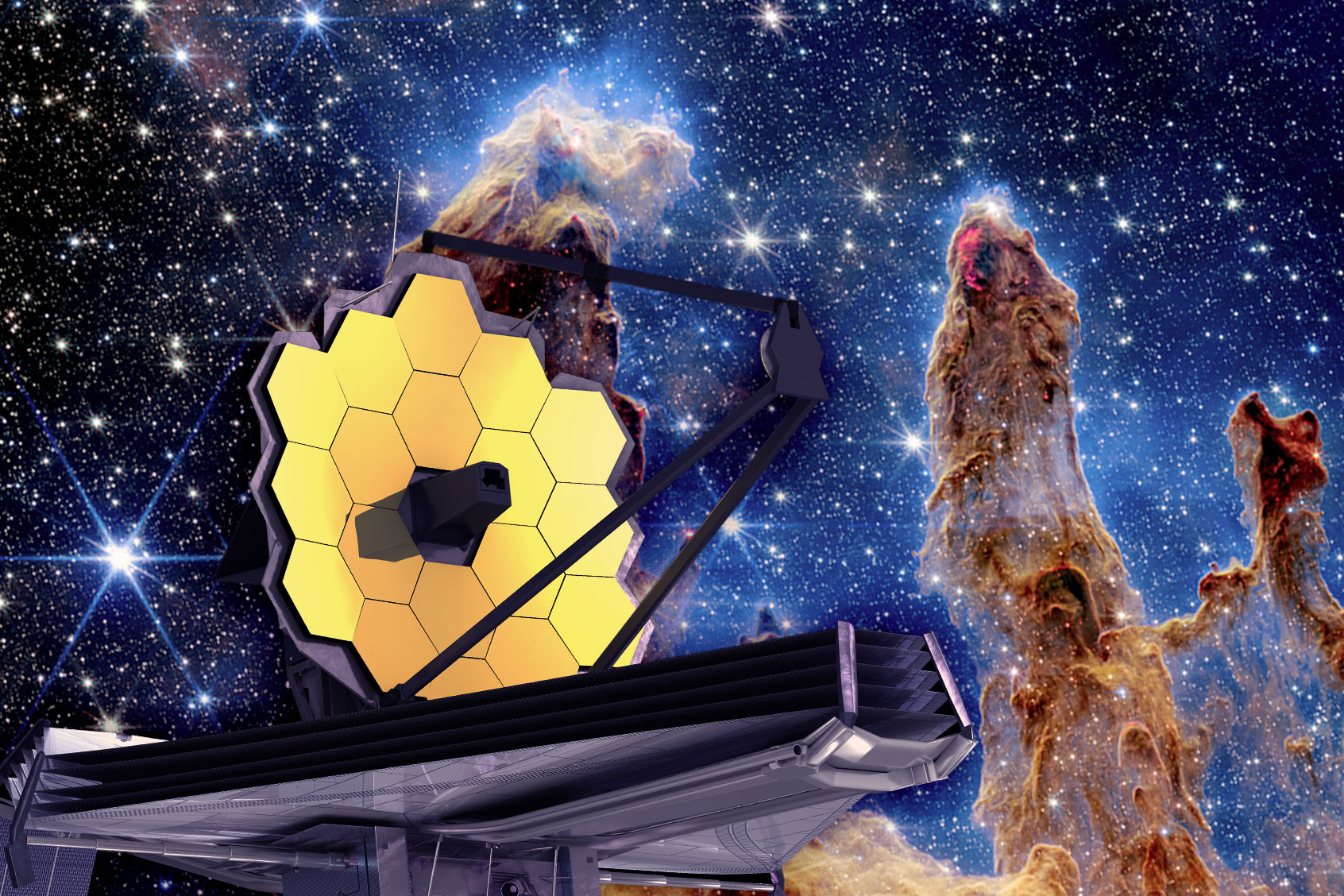As the finger-like celestial objects seem to grasp into the heavens, the Pillars of Creation are almost impossible to adequately describe with human language. Located in Eagle Nebula in the Serpens constellation, the clusters of cool interstellar gas and dust appear splotchy in the Hubble Space Telescope's images, but thanks to the James Webb Space Telescope (JWST), the Pillars truly appear like solid columns.
With a normal earthbound telescope, one can only see the Serpens constellation in the northern part of the celestial hemisphere. The breathtaking beauty of the Pillars, which humanity can now appreciate in even finer detail, only became evident to those whose eyes turned toward the heavens within the last few years.
This is just one of many gifts the JWST has bestowed on humanity. One of the biggest fans of the next gen telescop is Ethan Siegel, a theoretical astrophysicist who used to teach at the academic level, but today most people know him for his work outside of the classroom as a science writer, especially his writing about space. Siegel's new book, "Infinite Cosmos: Visions From the James Webb Space Telescope," was released on Oct. 8th.
Good science writing is a fine balancing act between not speaking over the heads of laypeople and not insulting the intelligence of experts. Siegel achieves that whether explaining inflation prior to the Big Bang or penning a book on humanity's lifelong quest to understand the universe beyond our solar system, Siegel is adept at breaking down complex concepts in compelling yet accessible prose. In the past he has spoken with Salon about everything from debunking UFO hoaxes to understanding Dyson spheres.
Salon spoke with Siegel about how the JWST has challenged dominant theories about cosmology, consistently presenting mind-boggling images that defy explanation, as well as why space is for everyone, regardless of political affiliation or creed.
The following interview has been edited for length and clarity.
Which images from this book are your personal favorites?
From a visual point of view, there are a number of stunning ones. I absolutely love the JWST [James Webb Space Telescope] images of the Pillars of Creation. We have pictures of the telescope while it was under construction as well. There is a picture of the ISIM module, which is the Integrated Science Instrument Module. This is a part of the telescope you don't normally see. It is gold in color, so it isn't just the JWST team mirror that's gold, but the instrument module itself is also gold. And I was really excited to get to see that, because that was a surprising one to me.
 Images of the Pillars of Creation taken from NASA's Hubble Space Telescope in 2014 (L) and a new, near-infrared-light view from NASA’s James Webb Space Telescope (R) (NASA, ESA, CSA, STScI)I really like the images we have of the sunshield. That's the novel technology that keeps JWST so cool in the shade. I had never seen before images of JWST as it was transported and stowed for launch, and that was astonishing to see as well. As far as the science images goes, I thought the first light image which we have in detail that has never been published before is in there. And that is really spectacular for showcasing just how good JWST's eyes are.
Images of the Pillars of Creation taken from NASA's Hubble Space Telescope in 2014 (L) and a new, near-infrared-light view from NASA’s James Webb Space Telescope (R) (NASA, ESA, CSA, STScI)I really like the images we have of the sunshield. That's the novel technology that keeps JWST so cool in the shade. I had never seen before images of JWST as it was transported and stowed for launch, and that was astonishing to see as well. As far as the science images goes, I thought the first light image which we have in detail that has never been published before is in there. And that is really spectacular for showcasing just how good JWST's eyes are.
There are also some images that you may not have heard that much about. I love a deep field image that shows the most distant galaxy cluster we've ever seen.
Want more health and science stories in your inbox? Subscribe to Salon's weekly newsletter Lab Notes.
"It is the largest, most sensitive space observatory ever built, and because of that, it has required new technologies that never existed before."
That's fascinating. I have to say, even though this is not a political book, when I'm reading anything that's about federally funded technology and how it advances our understanding of science, I feel this need to ask, do you feel that people should appreciate how this telescope exists because of, for lack of a better word, the military-industrial complex?
I would go on to say that, when it comes to exploring the universe, we are limited in what we can do as individuals. It takes an enormous amount of resources and a tremendous number of people working together with a sustained investment to create something and to run and to launch and deploy and calibrate and keep maintaining something like the James Webb Space Telescope.
When you talk about it, I don't necessarily see that the military-industrial complex made this, but I do see that this took a sustained investment from the government, from its aerospace partners and from all of the scientists, engineers and technicians involved, all to bring something like this to fruition. I think what we're witnessing is sort of a real crown jewel of what humanity can achieve if we collectively invest resources in the endeavor of science for the good of us all.
 NASA’s James Webb Space Telescope’s high resolution, near-infrared look at Herbig-Haro 211 reveals exquisite detail of the outflow of a young star, an infantile analogue of our Sun. (ESA/Webb, NASA, CSA, Tom Ray (Dublin))This then goes back to the question of, "What are the major achievements of this particular telescope? Can you explain how James Webb is a breakthrough compared to other telescopes that have been developed?"
NASA’s James Webb Space Telescope’s high resolution, near-infrared look at Herbig-Haro 211 reveals exquisite detail of the outflow of a young star, an infantile analogue of our Sun. (ESA/Webb, NASA, CSA, Tom Ray (Dublin))This then goes back to the question of, "What are the major achievements of this particular telescope? Can you explain how James Webb is a breakthrough compared to other telescopes that have been developed?"
For one thing, it is the largest, most sensitive space observatory ever built, and because of that, it has required new technologies that never existed before. It was designed and built — such as the folding segmented mirror, such as the five-layer sunshield and such as the science instruments that are onboarded — all of those represent newly-developed technologies. And because of that, because we have a new telescope with larger aperture, high-precision sensitive wavelengths and new instruments, we were able to discover a whole slew of new things about the universe that we never knew before.
These include the most distant galaxy cluster; it includes classes of objects like what we call JuMBOs, which stands for "Jupiter Mass Binary Objects." We saw star forming regions where you will have stars that form and planets form around them. We did not know we would find giant planets forming without parents stars at all, much less that we would see giant stars forming in pairs or binary systems with no stars at all. One of the most fascinating things that JWST has shown us, that I'm excited we do get to talk about in the book, is that around a nearby young star, a star called Fomalhaut, we don't see just an analogy of the solar system where you have planets and an asteroid belt and more planets and a hyper belt. We found in that system that there is a third belt, there is an intermediate belt in there. We never saw an intermediate belt before. We did not know that such things could exist.
And now we have to rethink our story about how planets and planetary systems form is our solar system typical or is the Fomalhaut system typical? We don't even know anymore, what is the most common configuration for planetary systems in the universe?
Do you worry about the future of our ability to gather information about science if the wrong political party wins this election and guts a lot of the vital funding to these scientific projects?
Well, I would like to say first off, that science is and should be for absolutely everyone, regardless of your political affiliation. If you are interested in learning about the joys and wonders of the universe, this is for you.
 NASA’s James Webb Space Telescope has produced the deepest and sharpest infrared image of the distant universe to date. Known as Webb’s First Deep Field, this image of galaxy cluster SMACS 0723 is overflowing with detail. (NASA, ESA, CSA, and STScI)As far as the endeavors we already have, the James Webb Space Telescope is already a tremendous success. It was planned to have a science lifetime of between five and a half and 10 years, but because of an exquisite launch, because of how perfectly things went during the launch of the telescope, they were able to conserve so much fuel that we are now expecting a 22 year science lifetime for JWST. So the good news is what we're talking about as far as science funding goes, if they got science funding, that that will affect future missions.
NASA’s James Webb Space Telescope has produced the deepest and sharpest infrared image of the distant universe to date. Known as Webb’s First Deep Field, this image of galaxy cluster SMACS 0723 is overflowing with detail. (NASA, ESA, CSA, and STScI)As far as the endeavors we already have, the James Webb Space Telescope is already a tremendous success. It was planned to have a science lifetime of between five and a half and 10 years, but because of an exquisite launch, because of how perfectly things went during the launch of the telescope, they were able to conserve so much fuel that we are now expecting a 22 year science lifetime for JWST. So the good news is what we're talking about as far as science funding goes, if they got science funding, that that will affect future missions.
But the James Webb Space Telescope is already up there and it already has most of its science lifetime still in front of it. So science will continue on, regardless of the outcome of the next election. But with that said, it's really important that the James Webb Space Telescope not be the last great flagship mission for NASA astrophysics. That this is an example of what we can do when we invest the right resources in it. And I would love to see the James Webb Space telescope usher in a new generation of NASA great observatories.
We need your help to stay independent
Do you think that there is an anti-science tendency in American politics today?
I think there are elements of that. You can certainly see when people talk about alternative facts, when people talk about their own preferred theories or ideas, we saw this a lot during the pandemic, with a huge rise that still exists of anti-vaccine sentiment. I think in terms of science, a lot of people don't understand how much their daily lives are dependent on the science and technology that has been developed over the 20th and 21st centuries. I'm certainly aware of a large anti-science element, and certainly it's attractive when you're dealing with complex issues to look to simple explanations, even if they're incorrect, but that has never held any allure to me. I would rather know the truth about what is out there in the universe, about what goes on out there in the universe.
This is why we look, this is why we explore, because we know there is more to learn out there. It's up to us to say, this is worth something. This spirit of investigation, this looking out to the universe itself to nature itself for the answers to our most deeply held questions, we're never going to answer these questions by simply saying what we think or looking at what's already known. If we want to learn more learn, we have to inquire. We have to ask questions to the universe, in novel and more powerful ways.
Read more
on astronomy:
- Why scientists think we could find extraterrestrial intelligence by searching for pollutants
- Hubble's enormous, ambitious successor is poised to change our understanding of the universe
- The Hubble telescope turns 32: Here are some of its greatest hits


